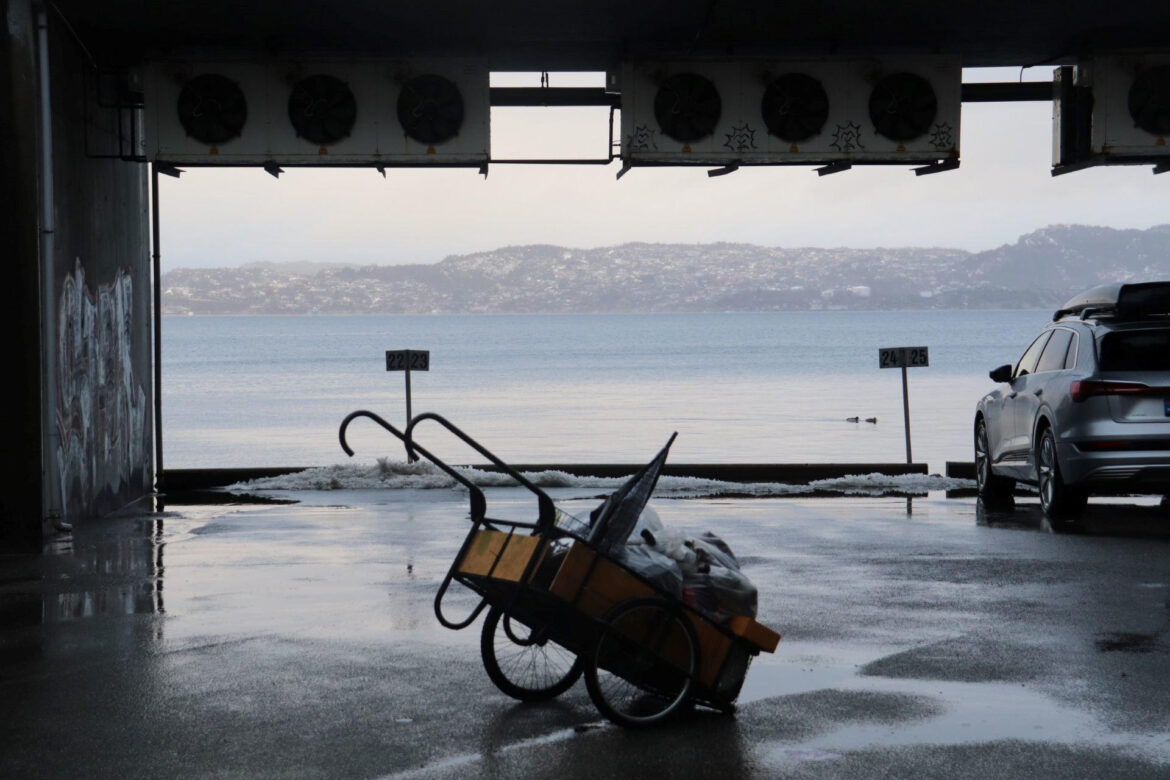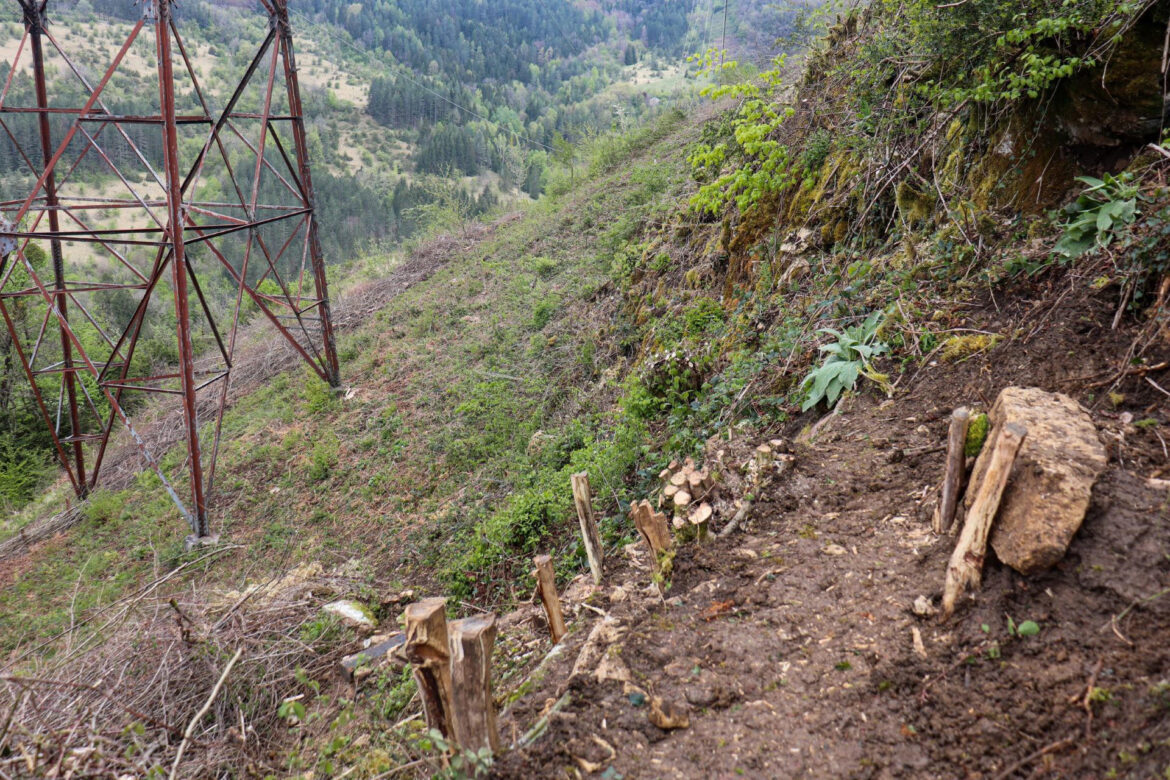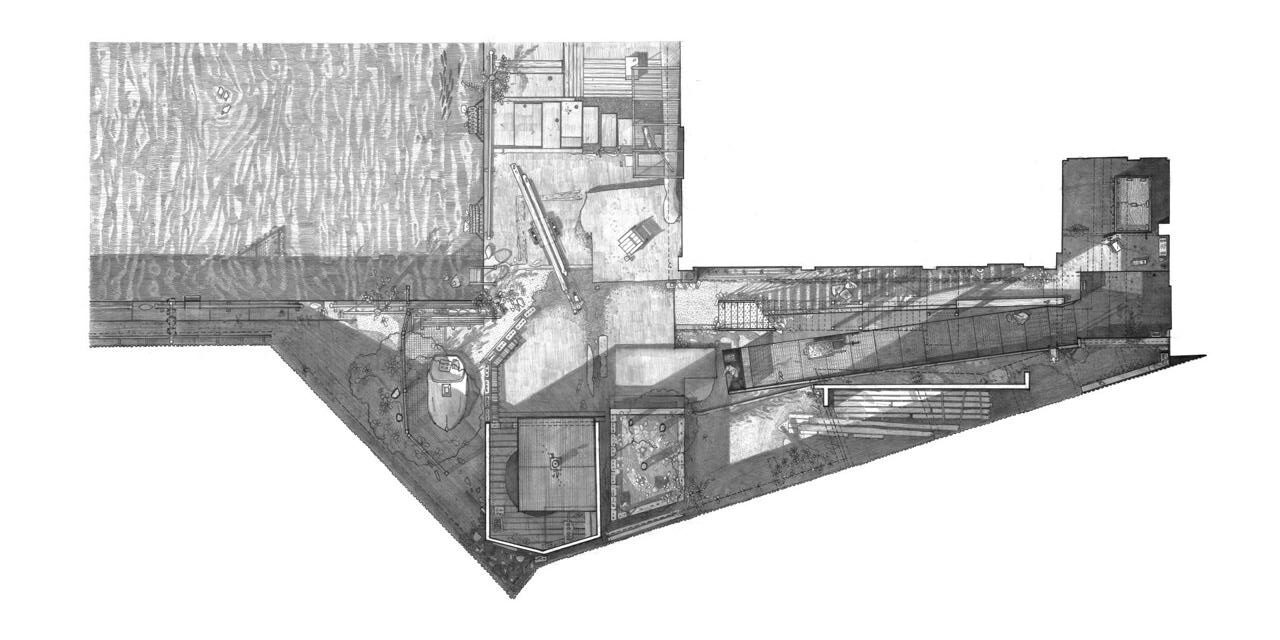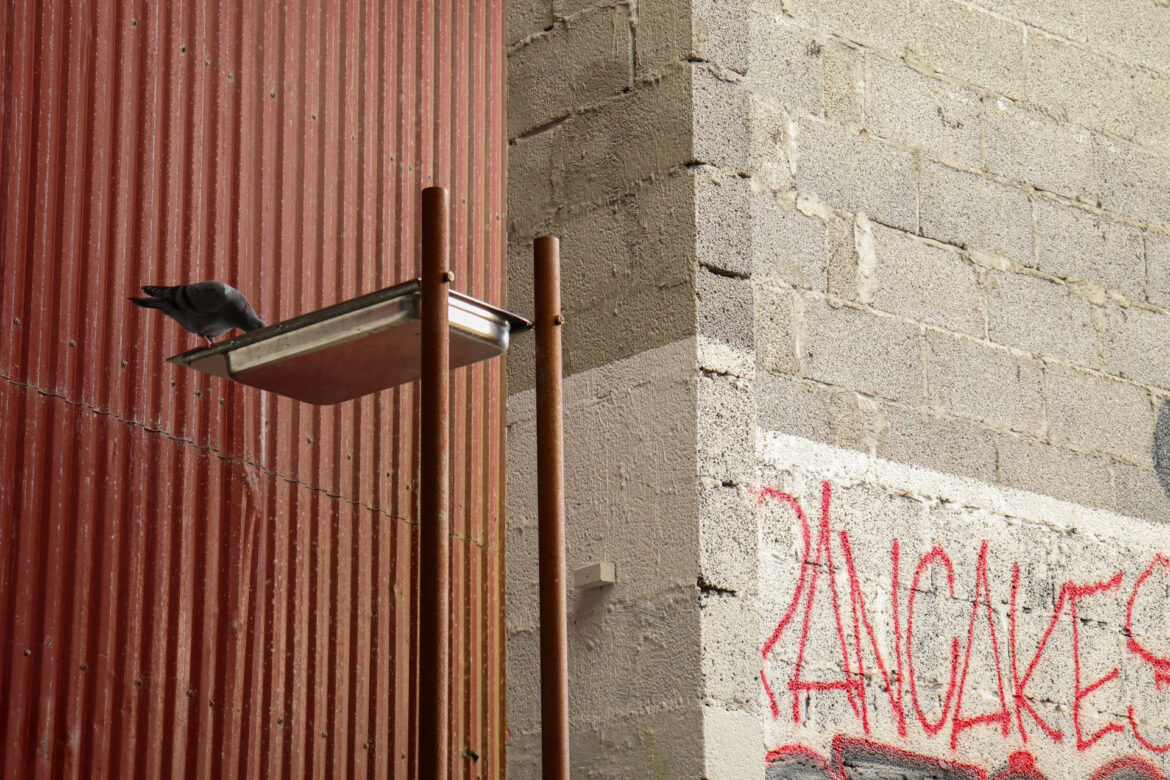SCREWS, FECES, BRANCHES, NEEDLES, LEAVES AND CORPSES.
60°24’34.7”N 5°19’18.8”E
Inhabiting marginal spaces
Doing architecture with the other-than-human
Located in Sandviken in the city of Bergen, Norway. A former industrial building with many old grain silos that today houses a school of architecture stands on the seafront concrete dock neighboured by hangars storing timber.
Working outside in between the old silos, the hangars and the sea we questioned and developed other ways of looking at the role of architecture in urban spaces. All of the work was thought out and designed on site and all materials used were collected in the same space. Living on site gave us an intimate understanding of the context. The space itself defines the marginality of the place; it is composed of several dead ends and corners. The school’s emergency exits open out into an outside corridor. The climate changes and the space has to adapt, along with all other beings living there: many birds, insects, fish and plants; many different kinds of waste are present. Most of the time we were the only humans present. The overwhelming majority of time was spent in observation; smelling, touching, listening, looking, mimicking. The existing networks communicated in ways very different than us but over time a common language had started to arise.
There were various interventions in the space: a ladder leading to the pigeons’ nests was taken down, a container collecting rainwater was constructed, serving as a place to drink and bathe for birds, bird boxes were hung in the trees, installation of ladders and handrails, opening and cleaning of the underground tunnel from the old factory’s machinery, the removal of barbed wire from the borders, enlarging the access to neutral ground between properties, deconstruction of access to the sea, construction of new access to the sea, endless collection of containers and materials, sorting of waste and resources, cleaning of the soil and feeding it, clearing adjoining spaces, moving the wooden structure of an historic building, maintenance of the opening in the neighbouring facade, construction of an indoor work space, connections to electricity, collection and organization of tools and resources, the extinction of a light.
Majority of resources used for the interventions come from the site, many of them taken from ‘waste piles’. Our bodies were confronted with the strength and resistance of many materials. We came to understand the boundaries of the plots and their physical limits as well as the issues of the properties; numerous fire regulations resulted in emergency exits and fire walls that dictate our actions. The entire dock is subject to new urban development plans that will initiate significant changes in the space in the near future.
Traces and artifacts of the inhabitants of the site and their oftentimes fragile existence were collected. Our living and architecturing in this space evidently questioned standards of comfort dictated by today’s architecture bibles. We believe that the role of the architect should be directly related to an almost uncontrollably intimate understanding of the context and its ecosystems; that we must judge the surface of the earth on which we build with as much precaution as if it were our skin. The life cycle of materials, and the longevity of the building becomes essential to reflection with an important understanding of networks of all species in the context. We imagine that the architect’s role does not stop at planning and construction, nor at repair and deconstruction.
Much of the work has been transcribed through a book and film.







